
Sanford Health’s air ambulance operation adds a corporate flight department.
Dec. 10, 2018
Sioux Falls, SD, is more than 200 miles from Bismarck, Fargo and Minneapolis. The great distances between these population centers, along with the punishing winter weather, hav-en’t stopped the Sanford Health network from serving people in seven states, from Montana to Minnesota.
In 1977, the hospital in Sioux Falls received a federal grant to reduce infant mortality and launched its first air ambulance. Today, Sanford Health operates four aeromedical King Air 200s and four Eurocopter EC145s out of five bases. They fly 5,500 hours a year, transporting patients to specialized care at Sanford’s University of South Dakota Medical Center in Sioux Falls and other hospitals across the region.
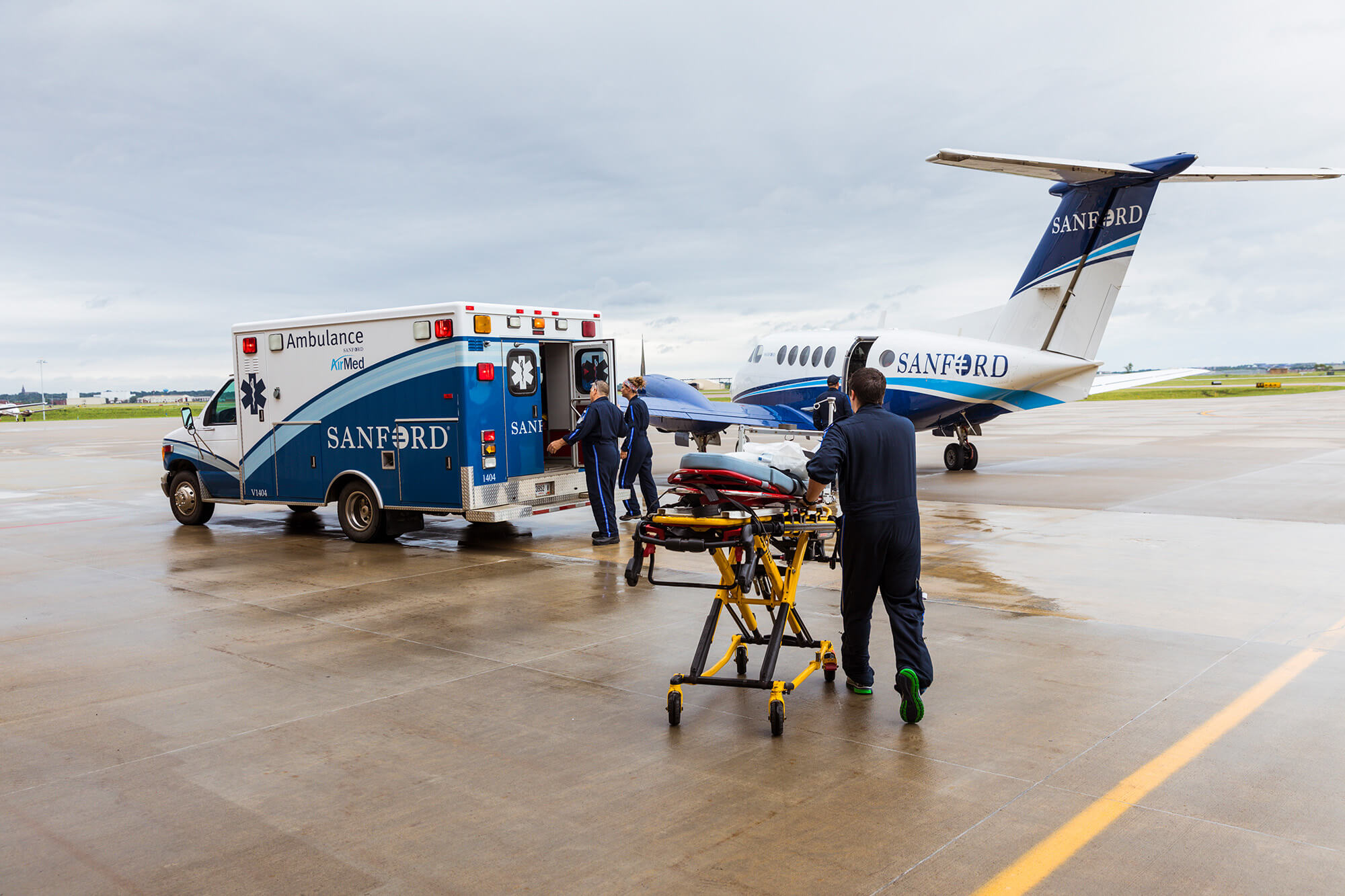
Years of expansion have also increased Sanford’s needs for physician and administrative travel between hospitals and clinics, and in 2012 the network began operating a flight department for the business side.
“The rural nature of our organization is what really drives our aviation pro-gram,” said Mike Christianson, senior executive director of aviation. “We cover a 300,000-square-mile area, ‘the Sanford footprint,’ and we need to be in service 24/7.”
Serving that area is challenging because of the limited infrastructure at many rural airports. Few airfields have instrument approaches or runways longer than a mile. Many do not have weather reporting, and meteorological conditions can change quickly.
Sanford has assembled equipment and personnel to fly in that environment. The King Air fleet can land on runways as short as 3,000 feet, and all the aviators, including the helicopter pilots, are IFR certified.
“The winter is tough for us, because if there’s ice in the clouds, we can’t fly the helicopters,” said Matt Horn, rotor wing chief pilot. “Or in thunderstorms. That’s when we rely most on the fixed-wing aircraft.”
The King Airs are also better suited to the long distances involved in some aeromedical flying across the large area that Sanford Health serves. But if an aeromedical mission needs to be flown to a remote location, such as a roadside or a field, the helicopters are the only way to get there.
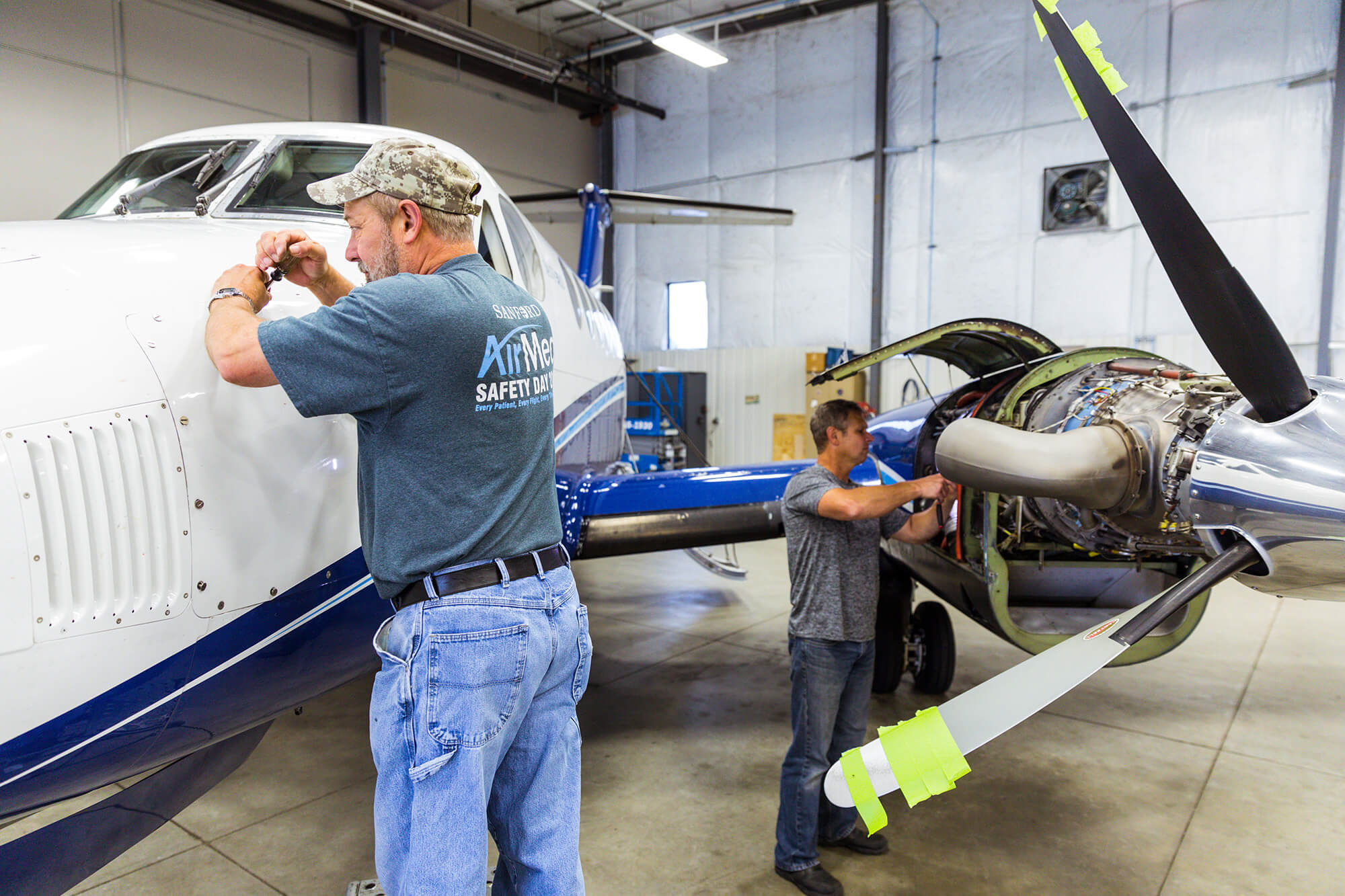
TAKING OVER THE BUS ROUTE
Much of Sanford’s growth has been achieved through merging with neigh-boring health systems. In 2009, the company merged with MeritCare in Fargo, ND, to form the nation’s largest rural nonprofit healthcare provider. The merger created an immediate and ongoing need for hospital administrators to travel between Fargo and Sioux Falls.
“Our people needed to spend more time in both locations. People from many departments were working on the integration,” said Christianson. “The first couple years, we had two buses drive back and forth several days a week. One would leave Sioux Falls at 7 a.m., another would leave Fargo at the same time, and they’d cross in the middle.”
The bus ride took three and a half hours, and “we needed to be more efficient getting people from A to B,” said Christianson. The hospital was already operating four King Air 200s as air ambulances. “We already had the pilots, the maintenance team, the hangar… all the infrastructure we needed.”
In addition to administrators, Sanford’s physicians often travel between the system’s 44 hospitals and 289 clinics. Many of those clinics are in rural areas, and teams of doctors and nurses travel out to them on what Sanford calls “outreach flights.”
With about one outreach flight scheduled every day, the volume is far higher than Sanford’s aviation department could handle internally, and they partner with a charter operator to support most of these vital missions.
In 2011, Sanford merged with another health system in Bemidji, MN, and the following year Sanford bought a fifth King Air, cutting administrators’ travel time between city pairs to 50 minutes. With an different cabin configuration than the four air ambulances, the air-craft flew exclusively for business travel, but the pilots crossed over between the two missions – at least at first.
DUAL ROLES
Supporting a fifth King Air, with a new business travel mission, was not a stretch for Sanford’s maintenance team. The four aeromedical King Airs each fly about 1,000 hours a year, and the eight fixed-wing technicians do nearly all the work in-house, so they already were performing a major inspection every two weeks.
“Our mandate is to make them as ready as possible, whenever possible,” said Greg Lostroh, director of maintenance for fixed-wing aircraft. “We don’t have a spare aircraft, so we stock close to $700,000 in parts. And if something breaks at three in the morning, we’re here at three in the morning.”
For the pilots, however, flying both aeromedical and corporate missions put a lot of pressure on crew and duty times.
“Because of the 24/7 schedule on the ambulance side, if you were doing a night shift, that would take you out for rest time for a corporate flight the day before and the day after,” said Fixed Wing Captain Sherwin Bolks.
As Sanford was staffing up to dedicate pilots to either the aeromedical mission or the corporate mission, the flight operation went through another major change. In 2015, a local philanthropist donated a Cessna Citation III to the organization. The next year, the hospital’s namesake benefactor, Denny Sanford, donated a Dassault Falcon 20. In two years, the aviation department went from two aircraft types to four, including the two jets.
“Some of these things happen quickly,” said Christianson. “We like it, because Sanford is always changing. It’s outside-the-box.”
The aviation leadership team put a plan together for integrating the two donated jets into the operation.
“It took us a while to get spooled up on the Citation and the Falcon,” said Christianson. “We didn’t have the parts for them, and we had to get our pilots and maintenance team trained.”
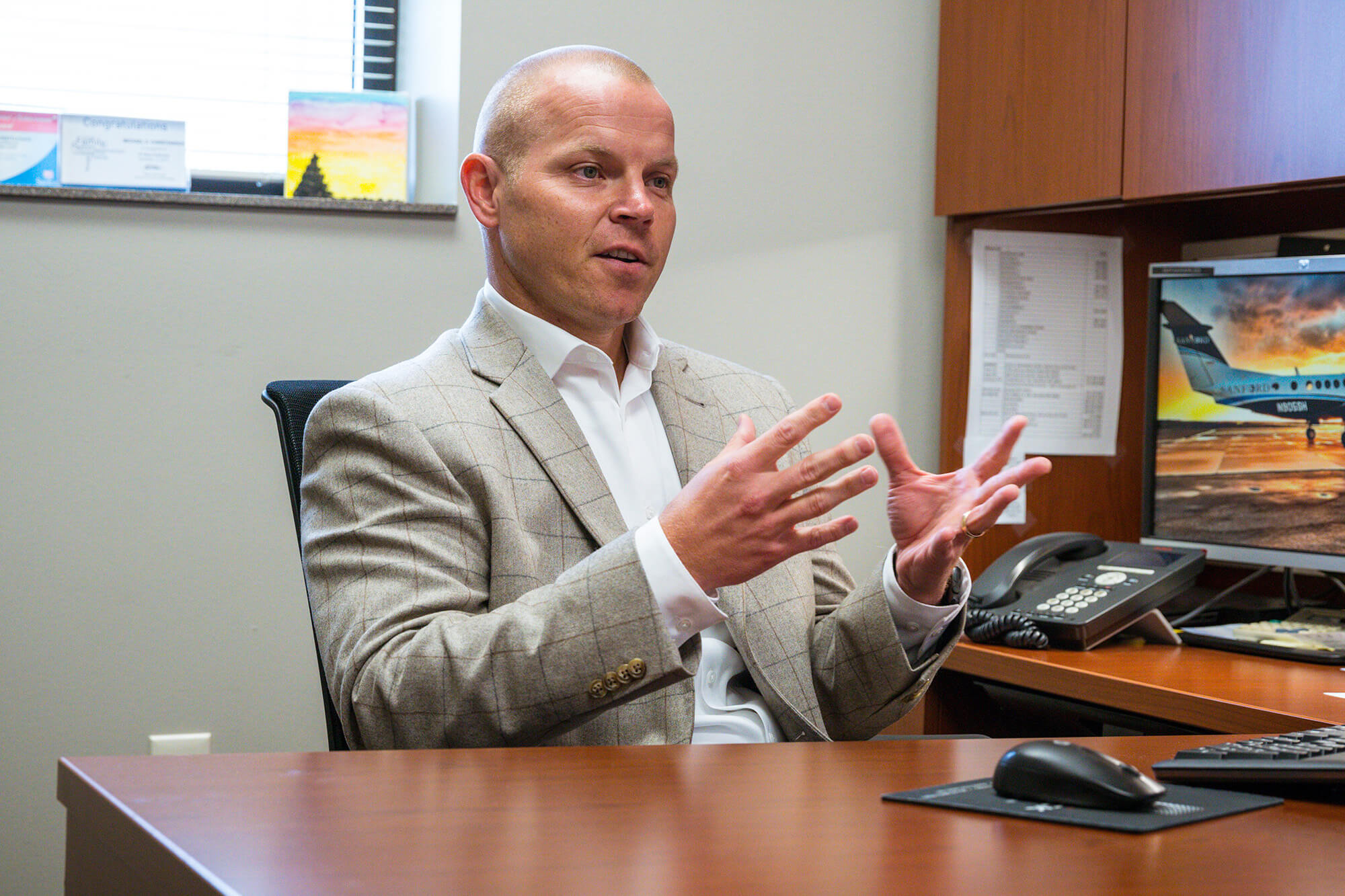
On the aeromedical side, Sanford’s expansion necessitated setting up four remote bases in Fargo, Bemidji, Dickinson, ND, and Bismarck, ND. Today, three EC145s and two King Airs are outbased, and pilots and technicians had to be hired to support them.
With the fixed costs driven by the aeromedical operation, “we already had the size and scope to operate” the three aircraft for the corporate flight depart-ment, said Christianson. Together, the three aircraft fly nearly 1,100 hours a year and seats are often full.
A UNIQUE GROWTH MODEL
Sanford was also able to expand its flight operation efficiently, in part because the organization owns and operates Maverick Air Center, an FBO at Sioux Falls Regional Airport. That keeps fuel, hangar and maintenance costs low.
With healthcare revenue so unpredictable, Sanford’s overall corporate strategy calls for earning 25 percent of its revenue from non-healthcare services. These include consumer weight-loss programs and healthcare consulting for businesses.
Because the organization already had an effective aeromedical program, invest-ing in the FBO fit the business strategy, supported the outreach flights, made business flying more cost-efficient and helped bring patients to Sioux Falls.
Sanford recently doubled the size of the fuel farm at Maverick and signed a new long-term fuel agreement.
“Now we control our fuel costs,” said Christianson. “I like how it all comes together: the FBO, the corporate flying and the air ambulance.”
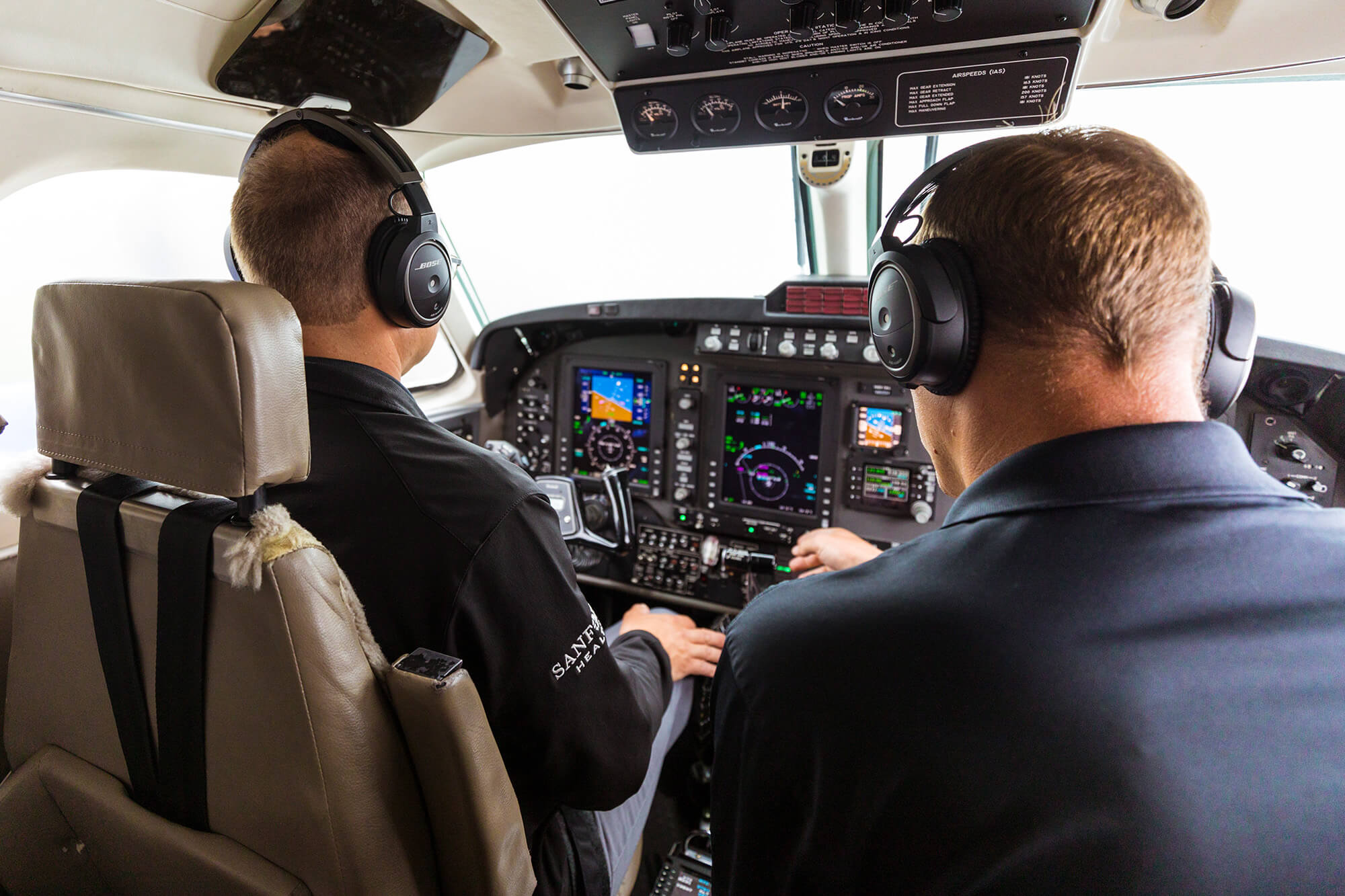
RETHINKING THE DUTY ROSTER TO HELP RETAIN PILOTS
Sanford Health flies all its fixed-wing aircraft with dual captains, all helicopter pilots are IFR certified and the organization staffs four outlying bases with pilots and maintenance technicians.
“We’ve been able to find some really good people, but with the workforce shortage, it’s getting harder to hire qualified candidates,” said Matt Honan, rotor wing chief pilot.
It can be especially hard in a rural area. After two pilots recently left for the airlines, Sanford got creative, reshuffling its duty roster based on the pay scales offered by some fractional providers.
The fractional providers pay higher salaries to pilots who fly 204 days a year, compared to pilots who fly 180 or 156 days a year.
“Essentially, we offered more money to the pilots who wanted to take more shifts,” said Mike Christianson, senior executive director of aviation. “Now we’re doing the flying of 16 full-time pilots with 14 people.”
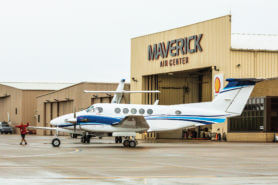
SNAPSHOT: SANFORD HEALTH
Aircraft:
Four King Air 200s and four EC-145s fly aeromedical. A Falcon 20, Citation III and a King Air 200 fly on hospital business.
Base:
Headquartered at Sioux Falls Regional Airport. Remote bases in Bismarck (BIS), Dickinson (DIK), Fargo (FAR) and Bemidji (BJI).
Personnel:
58 pilots (including a director who flies), 17 maintenance technicians, 11 schedulers, and more than 300 nurses and paramedics.


 International Business Aviation Council Ltd.
International Business Aviation Council Ltd.